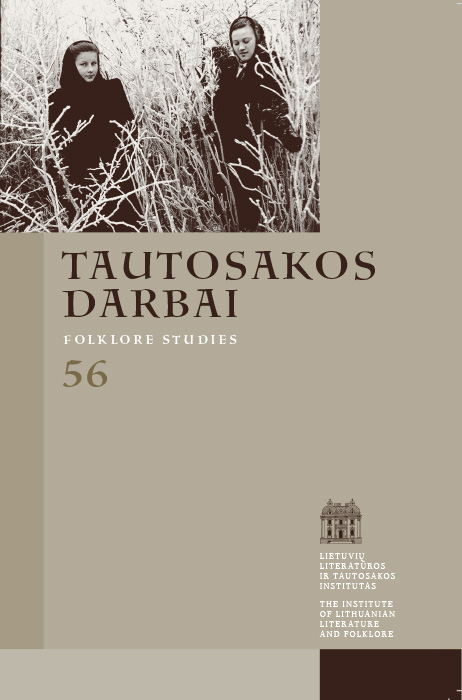Tarp kaimo ir miesto: tapatybės konstravimas autobiografiniuose pokario vilniečių pasakojimuose
Santrauka
Remiantis vykdant projektą ,,Individualaus modernėjimo siužetai pirmosios kartos miestiečių autobiografiniuose pasakojimuose (pokario Vilnius)“ surinktais žodiniais interviu ir kitais šaltiniais, straipsnyje keliamas klausimas: kaip, kada ir kokiu mastu per du pokario dešimtmečius į Vilnių atvykę gyventojai adaptavosi ir tapo / pasijuto miestiečiais (o gal išvis tokiais netapo)? Atsakymo į šį klausimą ieškoma naudojant sakytinės istorijos metodinę prieigą, o žodinių autobiografinių pasakojimų tyrimui pasitelkiant folklorinę naratyvinę analizę: dėmesys kreipiamas į tam tikrus išskirtinius pasakojimų turinio ir raiškos bruožus, leidžiančius įžvelgti gilesnę naratyvo struktūrą ir rekonstruoti esmines pasakotojo savivokos sudedamąsias dalis.
Atsisiuntimai
Nėra atsisiuntimų.
Skaitomiausi šio autoriaus(ų) straipsniai
- Lina Būgienė, Raganavimas Lietuvos kaimo bendruomenėje XXI a. pradžioje (folkloro ekspedicijų duomenimis) , Tautosakos darbai: T 66 (2023): Tautosakos darbai
- Lina Būgienė, Keturioliktieji „Profesoriaus Norberto Vėliaus skaitymai“ – apie velnius ir velniavas , Tautosakos darbai: T 65 (2023): Tautosakos darbai
- Austė Nakienė, Radvilė Racėnaitė, Vita Ivanauskaitė-Šeibutienė, Rytis Ambrazevičius, Lina Būgienė, Gražina Kadžytė, Rima Visackienė, Irena Žilienė, Andželika Jakubynienė, Kronika , Tautosakos darbai: T 52 (2016)
- Lina Būgienė, Apie Močiutę ir ne tik , Tautosakos darbai: T 64 (2022)
- Lina Būgienė, Giedrė Šmitienė, Jurga Jonutytė, Janinos Degutytės laiškų leidinį pasitinkant , Tautosakos darbai: T 69 (2025): Tautosakos darbai
- Austė Nakienė, Daiva Vaitkevičienė, Vita Džekčioriūtė-Medeišienė, Gražina Kadžytė, Aurimas Bačiulis, Vida Savoniakaitė, Lina Būgienė, Kronika , Tautosakos darbai: T 55 (2018)
- Vita Džekčioriūtė, Aušra Žičkienė, Jūratė Šlekonytė, Gražina Kadžytė, Jurgita Ūsaitytė, Lina Būgienė, Daiva Vyčinienė, Kronika , Tautosakos darbai: T 48 (2014)
- Lina Būgienė, Folkloras ir politika: prigimtinės sąsajos ir įsišaknijusios stigmos , Tautosakos darbai: T 61 (2021)
- Lina Būgienė, Greta Paskočiumaitė apgynė disertaciją ,,Lietuvos partizaninio karo pasakojimas: trijų kartų tyrimas" , Tautosakos darbai: T 67 (2024): Tautosakos darbai
- Lina Būgienė, Martynas Vingrys, Irena Snukiškienė, Dalia Urbanavičienė, Gražina Kadžytė, Jurga Sivickaitė-Sadauskienė, Informacija , Tautosakos darbai: T 64 (2022)
